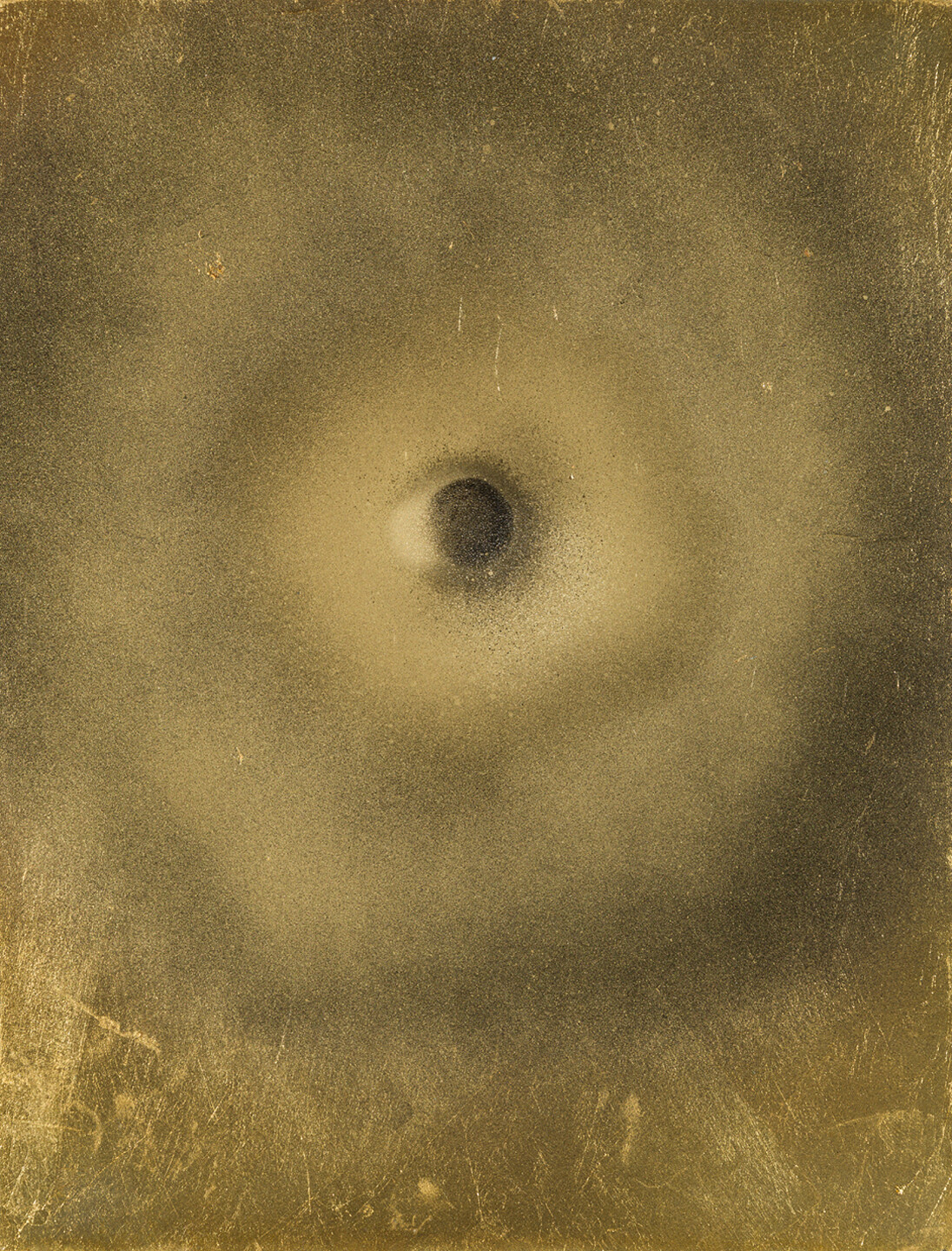October 4, 2018–January 6, 2019
From October 4, 2018 to January 6, 2019, Bergamo’s GAMeC – Galleria d’Arte Moderna e Contemporanea presents Black Hole. Art and Materiality from Informal to Invisible, the first exhibition in an ambitious three-year research programme dedicated to the theme of matter, conceived by Lorenzo Giusti, developed with GAMeC curator Sara Fumagalli, and with the scientific input of the physician Diederik Sybolt Wiersma and the collaboration of BergamoScienza.
Activating a dialogue with the history of scientific and technological discoveries, as well as exploring the development of aesthetics theories, Black Hole showcases the work of those artists who have explored the material element’s most intrinsic significance, where the actual concept of “material” shatters to open up a profounder idea of “matter” as an original element, as the primordial substance that constitutes everything.
The exhibition intends to narrate this dimension in three different perspectives: the first, of those who looked to the tangible, material element as a primary entity, preceding or alternative to form; second, of those who interpreted human nature as part of a broader material discourse; thirdly, of those who embarked on the penetration of matter, pushing the boundaries of materiality itself, grasping its infinitesimal and energetic dimension.
Section 1: Informal
The works of the first section interact with the development of scientific discoveries, and hence shun any intent to represent the world, using traditional and unusual materials not as elements to be shaped and thereby create new forms, but by virtue of their intrinsic value, of their standing as “elements in themselves.” Material configurations whose indeterminacy transmits an idea of reality as a constantly changing substance.
Section 2: Humankind-Matter
This section evolves in an articulated, transversal path, with the artworks of different generations of artists installed side by side, sharing a strong material component but also a variously manifest presence of an anthropomorphic element. Works in which the human body is then primarily a “material body”, and the human figure hinted at or in decomposition becomes the vehicle for an integrated world vision, held together by the very theory of matter.
Section 3: Invisible
Unlike those of the first two sections, testifying to a physical relationship with matter—slashed, coated, scratched, burnt, oozed, but “in itself” matter nonetheless—the works in the third section look to more hidden aspects of matter, invisible to our eyes, conversing with the atomistic and subatomic dimension.
Exhibiting artists
Karel Appel, Hicham Berrada, Alberto Burri, Christo, Gino De Dominicis, Jean Dubuffet, Simone Fattal, Jean Fautrier, Urs Fischer, Lucio Fontana, Alberto Giacometti, Lydia Gifford, Cameron Jamie, Asger Jorn, Hans Josephsohn, Anish Kapoor, Anselm Kiefer, Leoncillo Leonardi, Piero Manzoni, Nicola Martini, Luca Monterastelli, Movimento Arte Nucleare (Enrico Baj, Joe Colombo, Sergio Dangelo), Gastone Novelli, Tancredi Parmeggiani, Florence Peake, Carol Rama, Milton Resnick, Auguste Rodin, Medardo Rosso, Thomas Ruff, Ryan Sullivan, Antoni Tàpies, Jol Thomson, William Tucker.
Meru Art*Science Research Program
The exhibition will avail itself of the contribution offered by Fondazione Meru – Medolago Ruggeri for biomedical research, which has put in place a new research project in the context of Trilogy of Matter and as part of the BergamoScienza festival.
The programme, conceived with the aim of creating site-specific actions dedicated to the art-science relationship, is coordinated by Anna Daneri, Alessandro Bettonagli and Lorenzo Giusti; for this first edition, it sees the participation of artists Evelina Domnitch & Dmitry Gelfand who have designed an environmental installation for GAMeC’s Spazio Zero.
Catalogue
The exhibition catalogue—published by GAMeC Books—will propose a series of texts of a scientific nature written by Gianfranco Bertone, Giulio Peruzzi and Diederik Sybolt Wiersma, mapping out the conceptual horizon of this first appointment in the Trilogy of Matter.
The volume will include essays by Lorenzo Giusti and Sara Fumagalli, as well as articles by international critics, curators and art historians—Alex Bacon, Mathieu Copeland, Anna Daneri, Micaela Deiana, Heike Eipeldauer, Eva Fabbris, Chiara Gatti, Valentina Gervasoni, Elio Grazioli, Luigia Lonardelli, Giorgio Mastinu, Fabiola Naldi, Alessandra Pioselli, Kari Rittenbach—called upon to provide a deeper analysis of the exhibited works.
Opening: October 4, 2018, 7pm



